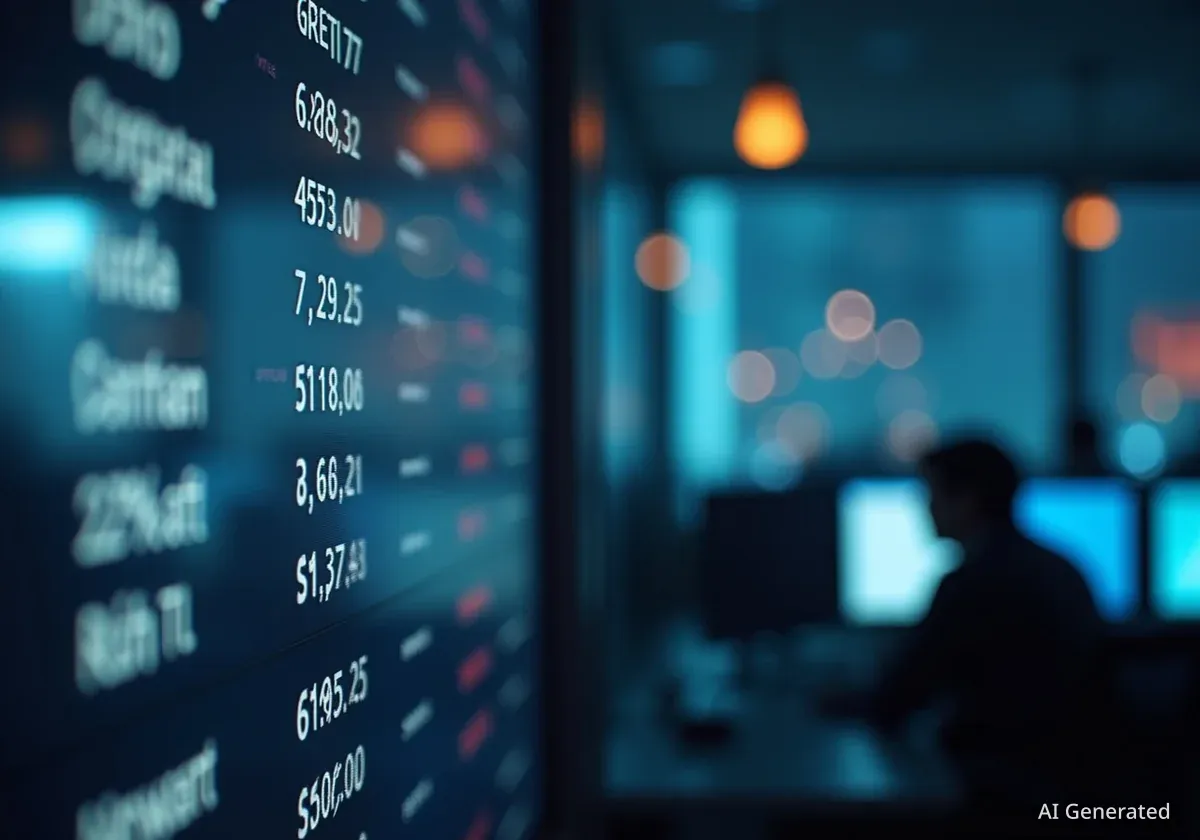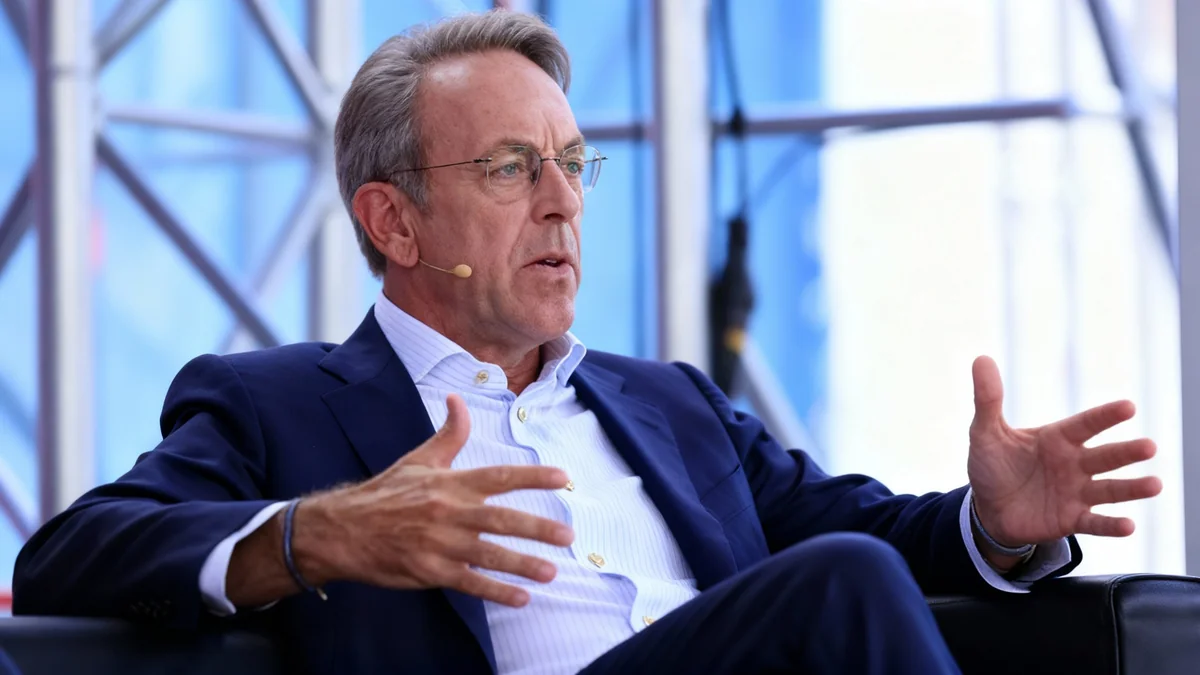Major technology firms at the forefront of the artificial intelligence boom are engaging in a series of massive, interconnected financial agreements. These deals, totaling over a trillion dollars, involve giants like Nvidia, OpenAI, and Oracle investing heavily in one another, raising questions about the stability and real-world value of the current AI market.
While these partnerships are presented as necessary steps to advance AI capabilities, some analysts are concerned they may be artificially inflating company valuations and creating a fragile economic bubble reminiscent of past financial crises.
Key Takeaways
- Major AI companies like Nvidia, OpenAI, and Oracle have announced multi-billion dollar deals where they are both customers and suppliers to each other.
- Experts question whether these circular capital flows are driving genuine growth or artificially inflating stock prices, a practice known as "round-tripping."
- The scale of financial commitments, such as OpenAI's agreement to spend over $1 trillion on computing, far exceeds its current reported revenue.
- Some economists draw parallels between the current AI investment climate and the interconnected financial dependencies seen before the 2007 housing market collapse.
A Web of Interlocking Investments
The AI sector's rapid growth is fueled by staggering financial commitments. In recent months, a pattern of circular investments has emerged among its biggest players. Nvidia announced a potential $100 billion investment into OpenAI for data center capacity.
Simultaneously, OpenAI committed to paying Oracle $300 billion for cloud computing power over five years. Completing the circle, Oracle announced it would purchase $40 billion worth of chips from Nvidia. This flow of capital between a small number of dominant firms has become a defining feature of the industry's financial landscape.
What is Round-Tripping?
Round-tripping is a term used to describe transactions that have little to no economic substance, primarily designed to inflate revenue or asset values. In this context, it would mean AI companies making large deals with each other to boost stock prices and create an appearance of high demand, rather than to generate real-world value or profit.
These agreements are, on the surface, mutually beneficial. Nvidia needs customers for its advanced chips, OpenAI requires massive computing power to train its models, and Oracle aims to expand its cloud infrastructure business. According to Rishi Jaluria, an analyst at RBC Capital Markets, such deals could create a "less capacity-constrained world," accelerating AI development.
"The better models we have, the more we can realize a lot of these AI use cases that are on hold just because the technology isn’t powerful enough yet to handle it," Jaluria explained. If this leads to real returns for customers, it could generate significant economic benefits.
However, he also cautioned about the alternative. "If that doesn’t happen, if there is no real enterprise AI adoption, then it’s all round-tripping." The success of this entire ecosystem hinges on whether AI technology can be effectively monetized and integrated into the broader economy.
Valuations Based on Promises, Not Profits
A significant concern is that stock market valuations are increasingly detached from current financial performance. Instead, they appear to be driven by promises of future growth outlined in these massive, long-term agreements.
Take Oracle as a case study. The company recently reported a quarter where it missed both revenue and earnings projections. Despite these traditional indicators of poor performance, its stock price surged. The reason was its "remaining performance obligations"—a measure of future contracted revenue—which showed a 359% increase year-over-year, largely due to its deal with OpenAI.
A Widening Gap
According to analysis by tech commentator Ed Zitron, major tech firms including Microsoft, Meta, and Google have invested approximately $560 billion in AI infrastructure over the last two years. In the same period, their combined AI-related revenue was only about $35 billion.
This trend highlights a market that is rewarding commitments over actual earnings. OpenAI itself exemplifies this dynamic. The company has reportedly agreed to more than $1 trillion in computing deals this year, a colossal figure for a private company with projected revenues of around $10 billion through 2025 and a valuation of approximately $500 billion.
The Scale of the Challenge
The logistical and financial hurdles to fulfilling these agreements are immense. For Oracle to provide the computing power promised to OpenAI, it will need to build data centers requiring an estimated 4.5 gigawatts of power capacity—more than the output of two Hoover Dams.
On the other side, OpenAI will need to generate roughly $60 billion in annual revenue starting in 2027 just to cover its bill with Oracle. This is a substantial leap from its current revenue base, and the company's projections of reaching $129 billion annually by 2029 depend on unprecedented growth and widespread adoption of its technology.
Echoes of the 2007 Financial Crisis
While some might compare the current AI boom to the Dot Com bubble of the early 2000s, other experts see a different historical parallel. Peter Atwater, an Adjunct Professor of Economics at William and Mary, likens the situation to the 2007 housing market collapse.
"What we saw at the top of the mortgage market was all of these conveyor belts of capital, money flowing from one party to another party to another party," Atwater told Gizmodo. "In many ways, we’re seeing the same developing web of capital flows across the AI space."
This creates a system where each company is dependent on the others to keep the capital flowing. A failure at any single point could trigger a cascade effect across the entire ecosystem. Atwater notes that in a bubble, both buyers and sellers tend to overcommit to stake a claim on a resource they believe will be scarce in the future.
"What we find over and over is that commitments are among the first obligations to be cut off once conditions change, once confidence begins to fall," he explained.
The Question of Real-World Adoption
Ultimately, the sustainability of the AI sector depends on whether its products find a profitable market. While adoption metrics seem impressive—OpenAI claims 10% of the world uses ChatGPT—the return on investment for businesses has been minimal so far.
A survey from the Massachusetts Institute of Technology found that 95% of companies that have tried to integrate generative AI tools have seen zero return on their investment. This suggests a major gap between the hype surrounding the technology and its practical, economic utility.
For now, investor confidence remains high, and the financial markets continue to fuel the cycle of investment. The AI industry is operating as if it has unlimited time to solve the monetization puzzle. However, if that confidence wanes, the pressure to deliver tangible profits will become immense.
The interconnected nature of these deals means that a downturn in the AI sector could have far-reaching consequences for the broader U.S. economy, which has become increasingly reliant on its growth. As Atwater observed, in a bull market, "‘Why?’ is the last question asked."





